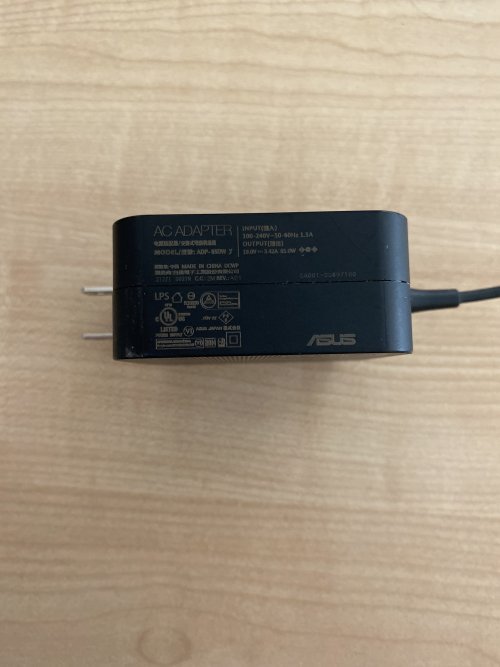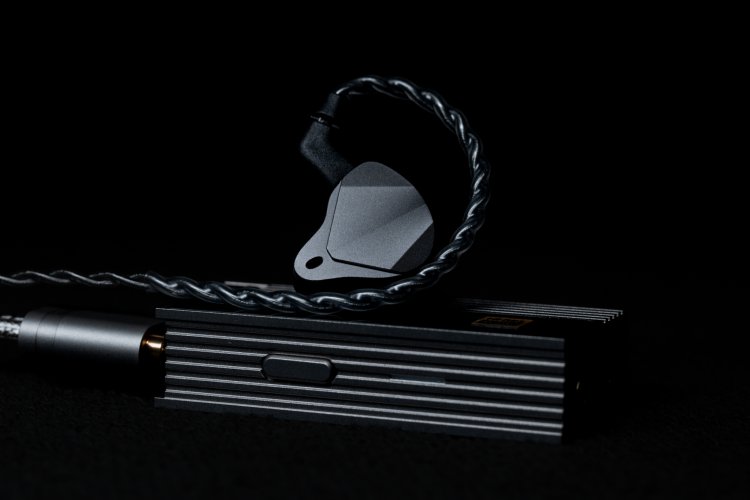Thanks to your advice, I took courage and connected the RU6 (SE volume 76) to the ifi micro iCan SE to try the HD800S... I'm speechless if not a... magic.
Latest Thread Images
Featured Sponsor Listings
You are using an out of date browser. It may not display this or other websites correctly.
You should upgrade or use an alternative browser.
You should upgrade or use an alternative browser.
Cayin RU7: 1-Bit Resistor Network Dongle DAC /Amp
- Thread starter Andykong
- Start date
I never had this impression.RU-6 reminds me of compression used on vinyl mastering to avoid excessive groove excursion with biggest impact on
low bass. Sound is musical but you can hear the loss compared to a desktop DAC or battery powered DAC.
….
In the end, I didn't quite understand what the "all to DSD" function should do... for example, if I activate it on my FiiO M15 it just makes everything more artificial and digital... instead, when done well, what should it add to the sound?
"All to DSD" feature in DAPs like Fiio is a lossy conversion, a battery killer and no reason to use it as it just half-arsed – on some tracks it sounds digital.
Cayin approached PCM to DSD with 1bit DAC architecture that's designed to only do just that and do it well.
Last edited:
emilsoft
1000+ Head-Fier
- Joined
- Dec 5, 2014
- Posts
- 1,477
- Likes
- 1,234
Maybe RU7 can get DSP eq? That little display is perfect for editing some eq bands...
Basically the difference between doing something just to do it and doing it well..."All to DSD" feature in DAPs like Fiio is a lossy conversion, a battery killer and no reason to use it as it just half-arsed – on some tracks it sounds digital.
Cayin approached PCM to DSD with 1bit DAC architecture that's designed to only do just that and do it well.
peterinvan
1000+ Head-Fier
I have invested years in curating my Tidal playlists. Tidal is gettting better in making recommendations based on my music tastes. I like the user interface. I do not have an MQA DAC, and dont seem to be missing out as the Tidal apps do the first unfold anyway. Looking forward to hi-res FLACS on Tidal.Ya I might just use Qobuz when MQA goes away. There won’t be any good reason to keep both at that point.
Qobuz has arrived in Canada, but the UI is so poor (and all in French) I cant even find out how to get my free trial.
Last edited:
Dunno much about FiiO or any other all-to-DSD implementation (have some of them, but never really use them), but if I am not mistaken with how DSC1 works (which is what RU7 seems to based on), RU7 also need to perform an all-to-DSD procedure to all incoming music data on the USB controller chip (or some kind of FPGA / DSP / SRC chip) before the data is sent to the 1 bit chip for decoding (*the actual 1 bit discrete DSD DAC doesn't do the all-to-DSD conversion). So the real question: is it in fact a better all-to-DSD conversion implementation on RU7 than other devices? Where is the evidence to support this and why is it so?
Dunno much about FiiO or any other all-to-DSD implementation (have some of them, but never really use them), but if I am not mistaken with how DSC1 works (which is what RU7 seems to based on), RU7 also need to perform an all-to-DSD procedure to all incoming music data on the USB controller chip (or some kind of FPGA / DSP / SRC chip) before the data is sent to the 1 bit chip for decoding (*the actual 1 bit discrete DSD DAC doesn't do the all-to-DSD conversion). So the real question: is it in fact a better all-to-DSD conversion implementation on RU7 than other devices? Where is the evidence to support this and why is it so?
Functional diagram was provided on page 1:
There's a simplified Audio Bridge which does the PCM to DSD conversion before its sent to 1Bit DSD DAC
We have provided a detailed explanation of 1-Bit DAC technologies and explained our implementation in Pure 1-Bit “DSD” DAC Explained. We can't use the FPGA technologies from N7 here because it was oversized and drained too much power for the Dongle application. We simplified the Audio Bridge in N7 by adopting a hardware solution to take care of the All-to-DSD transcoding and upsampling. This implementation enables the RU7 to decode up to DSD256 natively, and it will handle PCM up to 384kHz flawlessly.

Last edited:
Yes, there is an audio bridge (*sounds like a SRC chip to me). But what makes me wonder is whether there is any significant difference between using a chip or doing it via software in other implementation. Is it better / worst, or just different way of doing essentially the same thing.
- Joined
- Nov 16, 2013
- Posts
- 8,449
- Likes
- 19,641
If your amplifier accept RCA input, then you can get. 3.5mm to dual RCA cable and connect to the 3.5mm output o RU7 and then set the output to line out. There is no point to use the 4.4mm output and then convert it to single-ended.So, what is the best way to implement a line out like this?
4.4mm out -> 4.4-to-3.5mm adapter -> 3.5mm to RCA splitter?


|
Stay updated on Cayin at their sponsor profile on Head-Fi.
|
- Joined
- Nov 16, 2013
- Posts
- 8,449
- Likes
- 19,641
Sorry, not supported.How about inline microphone support? Being able to take voice calls is a big dealbreaker for me

|
Stay updated on Cayin at their sponsor profile on Head-Fi.
|
- Joined
- Nov 16, 2013
- Posts
- 8,449
- Likes
- 19,641
This is not going to help, pretty sure a lot of reader will ignore your question after this.Lol, so you don't know anything either
In short, both RU6 and RU7 are implemented with discrete resistor network to convert digital audio to analogue, the circuitries of the two resistor networks are completely different because they work with different input bitstream. The RU6 is a R-2R DAC designed for PCM digital audio data. The RU7 is a 1-bit DAC designed for DSD digital audio data.
Therefore both RU6 and RU7 didnt involve any off-the-shelf DAC chipset.

|
Stay updated on Cayin at their sponsor profile on Head-Fi.
|
- Joined
- Nov 16, 2013
- Posts
- 8,449
- Likes
- 19,641
Nope, if you look at the functional diagram, the 4 channels are designated as L+, L-, R+, and R- repectively, which mean they are the regular stereo channel and their corresponding negative phase. We describe this design as differentiate DAC, and they are completely different from multichannel DAC.RU6 has been my daily driver for a while now and 8s my favorite DAC ever. I will be upgrading to RU7 as soon as possible.
The all-to-DSD and line out features feel like they were tailor-made for me.
One remaining question I have after reading the specs though, will RU7 be compatible with multichannel music? Or are the 4 channels merged into 2 stereo channels at all time?

|
Stay updated on Cayin at their sponsor profile on Head-Fi.
|
I know it probably doesn't make sense to convert PCM to DSD on the source device connected to RU6, but that's what I have been doing for a while and to my ears it sounds better. I really don't know how to explain it.This is not going to help, pretty sure a lot of reader will ignore your question after this.
In short, both RU6 and RU7 are implemented with discrete resistor network to convert digital audio to analogue, the circuitries of the two resistor networks are completely different because they work with different input bitstream. The RU6 is a R-2R DAC designed for PCM digital audio data. The RU7 is a 1-bit DAC designed for DSD digital audio data.
Therefore both RU6 and RU7 didnt involve any off-the-shelf DAC chipset.
ThanatosVI
Headphoneus Supremus
As can be seen here in the opening post, there are no off the shelve Chips usedWhat kind of chip-set in this dongle ?

There is a Brief explanation including a link to a more in depth explanation in the opening post.1-Bit DAC architecture ? I have no idea what is that
"We have provided a detailed explanation of 1-Bit DAC technologies and explained our implementation in Pure 1-Bit “DSD” DAC Explained. We can't use the FPGA technologies from N7 here because it was oversized and drained too much power for the Dongle application. We simplified the Audio Bridge in N7 by adopting a hardware solution to take care of the All-to-DSD transcoding and upsampling. This implementation enables the RU7 to decode up to DSD256 natively, and it will handle PCM up to 384kHz flawlessly.
While the DAC of both RU6 and RU7 are resistor-network based, the 96 pieces (2x48) resistor network in RU6 is a stereo (2-ch) R-2R implementation, the 128 pieces (4x32) resistor network in RU7 is a fully balanced 4-ch DAC design. Although we need to convert the DAC output to single-ended for subsequent processing, the fully balanced DAC can render more detail and preserve more dynamics of the music. If we treat R-2R and 1-Bit as two different but equal engineering approaches to convert the digital audio bitstream to the analog waveform, the fully balanced design in RU7 will still be a step up from the singled-end design in RU6"




























